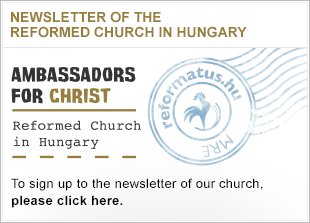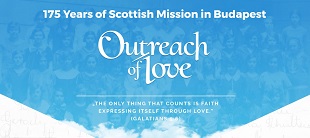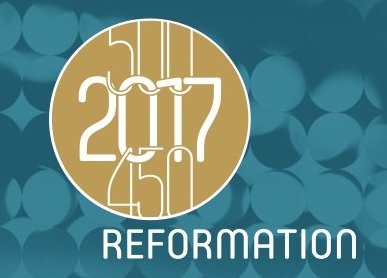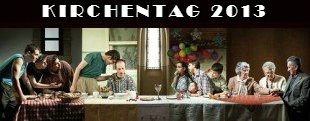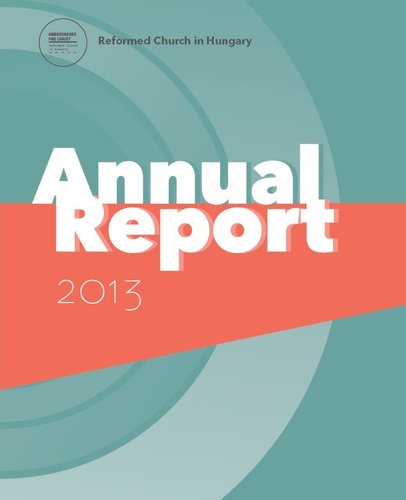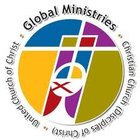Stories from Mother’s House
2016. május 26., csütörtökTragedies can strike at any time, but Bethesda Hospital is going above and beyond to make sure that family’s hospital stays are as holistic as possible. They opened a Mother’s House in November 2015 and have since helped over thirty parents with room and board during their child’s hospital stay. Being near to their loved ones helps not only the parents, but the children who are recovering as well.
Trouble can take hold in just a moment, but recovery often takes years – a traffic accident, a household accident, or a serious infection can happen in an instant and the parents of the hospitalized children may feel guilty because of it. Everyone wants to spend more time at the patient’s bed, and the Mother’s House, which opened last November, can help by providing nine beds for mothers whose children are in a long-term hospitalization and are traveling from far away. This all takes place in the 150-year-old Bethesda Hospital.
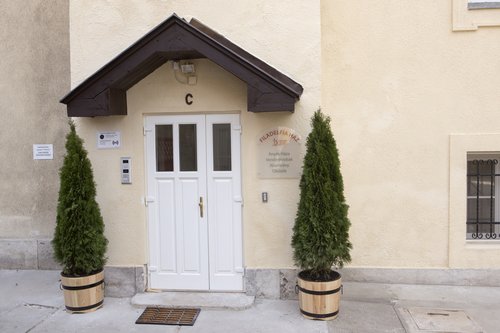
The Life of a Greenhouse
In Budapest’s XIV District, between City Park and the busy Hungaria ring road, there is a metaphorical reformed island: next to the Hungarian Reformed Church Aid and the Albert Schweitzer Reformed Elderly Home are the central buildings of Bethesda Children’s Hospital. Bethesda was a villa bought in 1914 by the Philadelphia Deaconess Association from Móric Kobrák, a bankrupt shoe factory owner. The building was bought to create a deaconess mother’s home and an apartment for the director. The mother’s home was made by renovating and adding to the part of the building which used to be a greenhouse; there were three about ten square-meters sized private heated rooms on each of the three levels of the building, with a shared bathroom at the end of the corridor, and a fifteen square-meters living room. “In 1953, when Bethesda was maintained by the state, it became the common property of the four church districts. Then they gave the right to use the building to the Bethesda Children's Hospital for ninety-two years,” said Rev János Bencze, Director of the Bethesda Hospital and the Executive Director of the Bethesda Hospital Foundation. The building has multiple functions: on the first floor there are dressing rooms and the office of the Bethesda Hospital Foundation, the organization that founded the Mother’s House. On the second floor there are medical dressing rooms, guest rooms for rural doctors who are visiting for trainings or for patent’s relatives who are living abroad, and a caretaker's room, but they are not totally finished yet. “We can see that in Bethesda the place to perform healthcare functions are increasing, but there are less and less places to provide social care, like places to prepare for work or place to take a rest for those who work at night,” said János Bencze about the current building operation.
Mother’s House by the Numbers
Since its opening on November 19, 2015, thirty-six needy parents have received free room and board in the Bethesda Mother’s House. The longest stay was sixty days, but the combined number of nights that parents have stayed is three hundred and five nights as parents from all over the country seek comfort during the period of their hospitalized children’s treatment.
Weeks, Months
The current Mother’s House was created in the former mother’s home’s ground floor. There are double and triple rooms for mothers coming from the countryside whose children need long-term hospitalization – without these rooms they otherwise couldn’t stay next to their sick children, who are sometimes between life and death, in critical condition. A kitchenette, a homely lounge, and laundry facilities are shared among all the rooms. Those who accept the conditions of moving in will have not just a clean bed, but also all-inclusive care that includes daily meals, so that they can give all their attention to their children. Even though such services are provided in several hospitals, Mother’s House is different. “Out of respect for our deaconess brothers, whose mother’s home was this building, we called the renovated part of the building Mother’s House. We started this service in November of last year and since then the maximum number of guests has been four to five people at the same time. There were some women who lived here for more than four months, but most of the guests stay just two to three weeks,” says the Executive Director. He says he will do everything he can to create a worthy place for receiving guests. Of course, sometimes unexpected life situations occur: for example, at the Mother’s House’s first Christmas, a family who lost their home and their oldest child in a fire celebrated the birth of the Savior between the walls of Mother’s House with a small Christmas tree. All this was possible thanks to the dedicated staff of the foundation and to the generous offerings – like congregation’s donations, one percent tax donations, or other offerings – which were sent by supporters of Bethesda to the Foundation. Volunteers at the hospital are praying and supporting Bethesda, and are also supporting the process of funding the Foundation through these generous donations.
A Hundred Thousand People for the Mother’s House!
The Bethesda Hospital Foundation launched a communication campaign on Facebook: if somebody followed the Hundred Thousand People for the Mother’s House page then they could get information on funding opportunities. The money that is donated to the Bethesda Hospital Foundation will help support the Mother’s House’s work and functioning.
In a Safe Place
Mothers can only get into the Mother’s House with medical recommendation from the city of Budapest, due to the limited capacity of the House. Due to this, mothers whose children need long-term treatment are the ones who usually receive recommendation. They can get the doors open with the easy swipe of a magnetic card – and much more, like free accommodation, food, and clean sheets – if they accept the house rules. The Mother's House and the Foundation staff do their best to help the mothers to release their feelings, rest in a protected area, and be mentally prepared for standing beside their child’s bed again. According to János Bencze, the secret of this place is the people who work there. The caretaker of the house and the foundation staff regularly visit the mothers and carefully, tactfully help them relax and recharge in a homey environment. “The hospital’s Burn Surgery Center, a national surgery center, has been operating for thirteen years. In this Center are children with severe burn injuries from all parts of the country who have to stay for weeks or for months. We wanted to provide this opportunity primarily for them and for their parents. By now, the Intensive Care Unit and the in-patient Rehabilitation Unit have also joined because a lot of children in the ICU are from rural areas, and the Rehabilitation Unit is an opportunity for children who were victims of serious accidents or suffered from drowning or burn injuries. We know the diseases and the family backgrounds, so we try to prepare ourselves well to provide a safe environment for mothers, including pastoral care,” added Rev János Bence.
If it had Been Earlier
When we were there, the Mother’s House was empty, but some mothers agreed to tell us their stories via telephone. When we asked how much help can a safe haven in a hospital really provide, perhaps the best answer came from someone who did not get this opportunity. “I don’t have too many good memories from that period, for sure. It would have been great if the Mother’s House had come earlier,” said Edit at the start of our conversation. The woman’s son is three years old now and a casual observer on the street would never be able to tell that he was under anesthesia for more than fifty days due to a serious burn injury two years ago. The mother and her child spent nearly four months in Bethesda Hospital. “Obviously nobody wants that for their children, but the trouble can happen in a second. What happened, happened, and unfortunately we cannot change it and we might never be able to get over it,” said Edit in a choked voice, who is still unable to speak objectively about what happened. “It was a very difficult time, and I am sure that it would have been a great help if the parents could be there near their children, and if they didn’t have to worry about how they will pay it off,” she said.
To get the Will to Live
To commute from most parts of the country to the hospital in Budapest is almost undoable. Children can meet their parents just for an hour or two, and Edit could be with her child just because she received help from her friend. “I don’t know what he perceived from the outside while he was under anesthesia. Now his situation is better, obviously not like before the accident, but he is here, among us, and this is the most important thing,” she reflected.
After the boy woke up, he had to relearn everything again with the help of physiotherapists, occupational therapists, and his family. After the near-death experience, they had to help him get the will to live again. The clown doctors played a significant role in it. “I received a lot of help from Bethesda, so I’ll do everything to improve their reputation. They tried to support me psychologically, the doctors were always there until the end, they tried to help me and explain me everything – I also got correct and realistic explanations. For these things I am very grateful. It is very important to show others what kind of hospital Bethesda is,” said Edit about why she agreed to tell us her story.
A Huge Help
“On January 25, we entered Bethesda with my daughter and we spent two weeks there,” said Lívia Tóth Nagy. The woman from Magyarkeresztúr has a five-year-old son and a one-year-old daughter. As she said, the Mother’s House was a huge help for her. “I have only positive things to say about the Mother’s House and about the hospital. I met very attentive people who took care of my psychological state too. They were helpful and they provided me a calm and quiet environment where I could really focus on my little daughter’s health. I could be next to my daughter from the morning till the evening and I didn’t have to think about how I would get home or where I sleep or what I would eat today. It meant a lot for my little daughter that I was always next to her, so she could recover faster. When she smiled or took my hand, it gave me more strength too.”
Parents Also Need to Recover
Lívia said that it was not only her child who suffered in the accident, but that parents like her need long-term therapy too. “I don’t want to anyone to feel what it’s like when a mother and her baby are forced to be in the hospital for weeks. It is cruel, especially if it happened because of an accident and there is a painful knowledge in you that you didn’t pay enough attention and you blame yourself. It is not only the child who is in a state of shock when an accident happens – after the accident I was in a state of shock too. A little time had to pass before I could realize what had happened to us. I spoke a lot with the caretaker woman and it helped me to calm down. It meant a lot that they paid attention to my soul too and they helped me to stop blaming myself for what happened, because anything can happen to anyone. There are still moments when I cannot accept what happened, especially when I see that little scar on my daughter, but thank God we were in a very supportive and encouraging atmosphere in the Mother’s House and at home too,” said the mother.
Written by Zsuzsanna Bagdán
Translated by Krisztina Fürjész
Contact us
Click here if you are interested in twinning.
Reformed Church in Hungary
Address: H-1146 Budapest, Abonyi utca 21.
PO Box: 1140 Budapest 70, Pf. 5
Email: oikumene@reformatus.hu
English, German and Korean language services in Budapest
Links
Recommended articles
-
Pastoral Letter in the Light of the Pandemic
Bishop Dr. István Szabó sent a pastoral letter of encouragement to the ministers serving in RCH’s congregations, expressing his gratitude for the persistence and creativity of the pastors.
-
RCH Joins in Pope's Call for Prayer
RCH published the call on congregations to join the initiative of Pope Francis, supported by ecumenical organisations, to unite in praying the Lord’s Prayer on Wednesday, 25 March, at noon.
-
English Speaking Worship Services Online
Each Sunday at 11 AM (CET) the St. Columba's Church of Scotland in Budapest, the international community of RCH invites you to join the worpship service on its facebook page.
-
Test of Humanity and Companionship
Reformatus.hu asked Dr. György Velkey, Director General of the Bethesda Children’s Hospital of RCH about the challenges of health care workers and ways of prevention against the pandemic.
-
All Church Events Suspended
In light of the coronavirus the Presidium of RCH requested congregations to suspend all church events with immediate effect. Beside restrictions, it calls for prayer, sobriety and responsibility.

